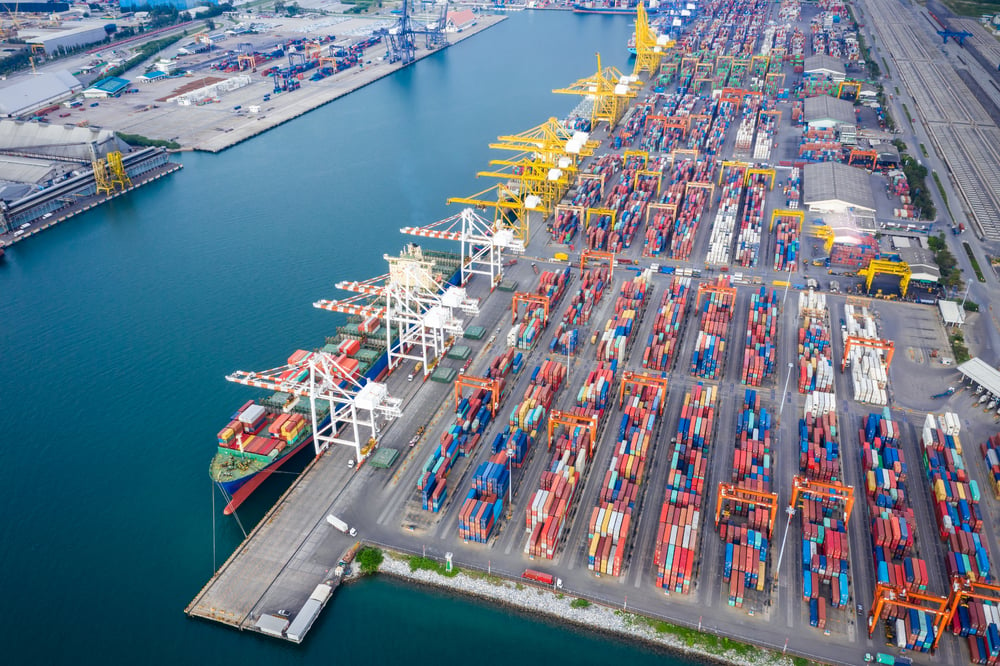Trade policy is no longer background noise for the construction sector — it is now a defining force in how projects are planned, sourced, and delivered. With U.S. import tariffs averaging 18.6% in August 2025 — the highest level since the 1930s — leaders in construction logistics face a new reality where political dynamics directly influence budgets, schedules, and risk management.
For decades, global construction supply chains were built on scale, efficiency, and interconnected trade routes. Today, those assumptions no longer hold. Tariffs of 50% on steel, aluminum, and copper, plus surcharges on semiconductors of up to 100% (with discussions of 300%), have shifted the conversation from cost optimization to resilience.
From Price Shock to Strategic Advantage
For many companies, the first instinct is to focus on rising costs. That’s understandable — Caterpillar alone expects billions in added expenses this year. But the more strategic question isn’t “How do we absorb this?” It’s “How do we redesign our supply chains so tariffs become a variable we can manage — not a shock that manages us?”
The leaders who win in this new landscape won’t be those who avoid impact altogether — tariffs touch everyone. Instead, they’ll be the ones who build construction supply chain management systems that are adaptable, diversified, and politically aware.
Local and Regional Sourcing as a Competitive Lever
What was once a contingency plan has become a core competitive strategy in construction logistics. Local and regional sourcing not only reduces tariff exposure but also improves control over project delivery and alignment with ESG goals.
Key benefits for construction projects:
-
Speed: Faster delivery cycles prevent construction project delays on the critical path.
-
Certainty: Domestic compliance avoids unexpected customs issues.
-
Flexibility: Close collaboration with suppliers enables rapid adjustments in design, packaging, or scheduling.
-
Sustainability: Shorter transport routes directly reduce emissions.
Just as Apple has diversified its supply base, construction leaders must rethink sourcing for critical-path materials like steel structures, HVAC components, and smart building systems.
Building Flexibility Into the Network
The traditional single-supplier model is too fragile for today’s environment. Instead, resilient construction supply chain management depends on diversified, pre-vetted partnerships.
Forward-looking leaders are:
-
Dual- or multi-sourcing key materials to spread tariff risk.
-
Forming logistics partnerships with cross-border expertise to navigate shifting regimes.
-
Embedding scenario planning into procurement, ensuring contracts allow supplier substitutions if tariff regimes change.
-
Leveraging construction site logistics software to integrate suppliers early and improve visibility across the supply chain.
This isn’t just risk mitigation. It’s the foundation for predictable delivery, OTIF in construction (On Time, In Full), and client confidence in an unpredictable world.
Leadership in the Age of Trade Uncertainty
The construction sector has always dealt with uncertainty — from weather to change orders. But the pace of today’s tariff shifts requires a new leadership approach.
-
Daily trade monitoring must become standard practice, not an afterthought.
-
Digital supply chain visibility tools should identify tariff-exposed imports in real time.
-
Scenario planning and risk modeling should guide procurement and project scheduling.
In short: construction logistics leaders who treat tariffs as an operational input — not an external shock — will outperform their peers.
The Bigger Picture: From Resilience to Advantage
Tariffs are not just inflating costs. They are redrawing the map of construction supply chains worldwide. For those clinging to old models, the result will be overruns, missed deadlines, and lost opportunities. For those who adapt quickly, tariffs can actually serve as a catalyst: forcing stronger partnerships, smarter sourcing, and more sustainable logistics strategies.
The predictable era of global sourcing is over. The next era belongs to those who lead with speed, adaptability, and political awareness — turning uncertainty into competitive strength.
Construction leaders should no longer ask how to “survive tariffs.” The real question is: How do we outperform through resilience, smarter construction supply chain management, and digital visibility?



